Get to do the muscle up , a spectacular calisthenics movement movement that strengthens your entire body. The muscle-up is a progression from the pull-up. If you're looking for a progressive bodyweight workout to build strength, try this move.
What are muscle ups?
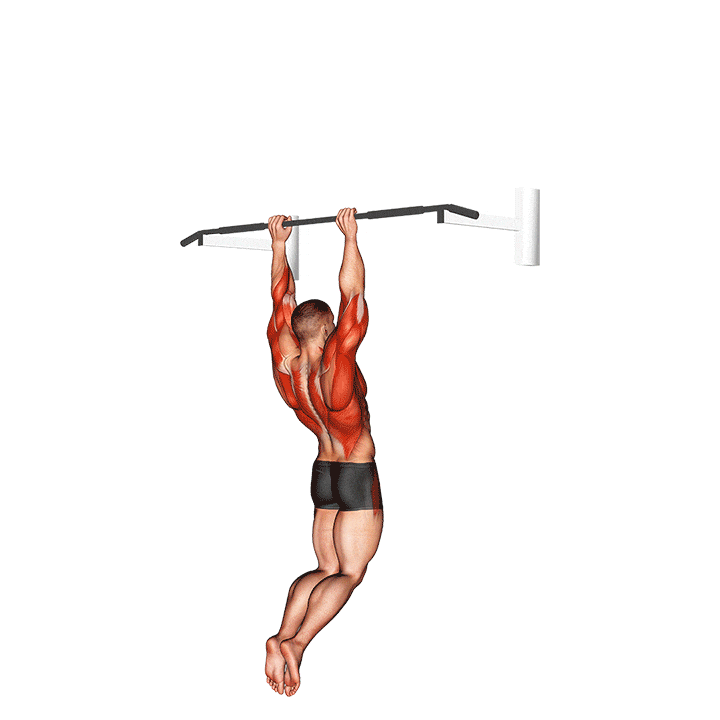
The muscle up, also known as a barbell muscle-up or strict muscle-up , is a calisthenics exercise where body weight is used to activate muscle groups throughout the body. To do a muscle-up, you have to grab a bar. It is necessary to use a false grip (ie put your thumbs above the bar instead of around it). To start, you have to keep your body tense and hanging from the bar, your legs straight and your toes pointed. Raise your torso by pressing your midsection in a movement pattern similar to a pull-up. When your chest is higher than the bar, lean forward and push off the bar to lift your body up in an explosive movement. Lower down gently and repeat this movement for the desired number of repetitions .
Muscle up tutorial and technique
Here is a detailed guide on how to perform the muscle up . Please note that these instructions are for performing the move using a barbell. If you were to do it with rings, the mechanics would be quite similar.
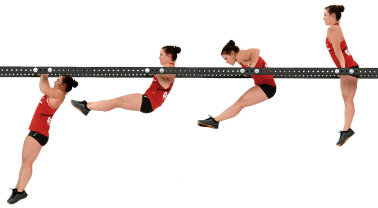
First step
Begin by hanging from the bar with your arms slightly wider than shoulder width apart. Use a false grip (thumbs should not wrap around the bar). You can practice hanging from the starting grip position and kicking. Using the swinging and kicking motion will help you build momentum while maintaining core stability.
A piece of advice : keep your legs together and your buttocks contracted at all times.
Second step: Bring the chest towards the bar
Now, it's time to bring the pectoral towards the bar. Push yourself aggressively towards the bar. Remember to keep your body rigid and your legs together. Try to squeeze your lower chest/belly against the bar by leaning back and pushing off.
Third step: Roll over the bar
After lifting your chest and reaching the bar, drive your chest and shoulders forward and over the bar to reach the bottom position for the parallel bar dips. Again, your body has to be rigid and you have to control your midsection.
One piece of advice : using the false grip will help you in this phase of turning and transition.
Step Four: Push yourself up
Lastly, finish the strict muscle-up or kicking (not strict). Fully extend your elbows at the top of the movement and maintain body control. Again, keep your body tight and control your core.
Step Five: Do another repetition
If you want to carry out several muscle-ups in a row , you can simply lower down and continue the jumping and kicking motion. You can also perform various cyclical muscle-ups. This requires more advanced training and developed skills. Lean back from the bar, return to the hop and swing cycle, and do the next rep.
Second method to do the muscle up technique
Step 1: Step away from the bar
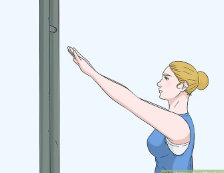
Stand about 30 cm from the bar. Raise your hands toward the bar at about a 45-degree angle. You can always warm up with some light cardio or resistance exercises before performing the muscle-up. Warming up prevents injuries. You can do jumping jacks, push-ups, or arm twists.
Don't stay directly under the bar like in a normal pull-up. Before you can muscle-up, you need to build speed. You will find it much easier if you start from a certain angle.
Step Two: Hold on to the bar with a false grip
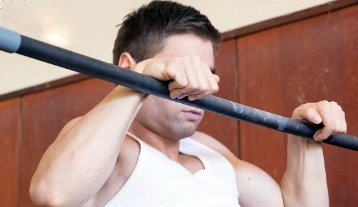
Jump towards the bar and grab it with both hands. Use a fake grip instead of a normal one.
If you are new to the false grip, you should practice it several times before attempting a muscle-up . To catch the bar with a false grip, keep your thumbs on the bar instead of around it. Think of the bar as the edge of a cliff. Don't hold the bar like you're holding a bottle. Instead, grab it like you're hanging from a ledge. Squeeze your palms together and turn them slightly inward. The bulk of your hand and wrist should be directly above the bar.
If you can't immediately grab the bar with a false grip, you can catch it with a normal grip as soon as you touch it. However, before moving on to doing the musleup , you should switch to a false grip. Using a false grip makes it easier to work your upper body muscles, rather than relying solely on lower body speed to complete the exercise.
Third step: Swinging
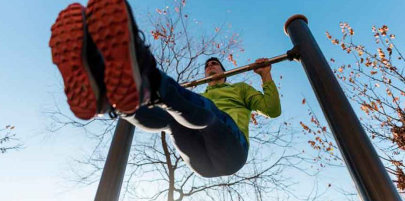
The forward rocking motion should automatically give the body momentum. You should be able to feel yourself rocking back and forth as you hang from the bar. You should start the muscle up when your body swings forward and peaks in the exact opposite position from the starting point.
This move is very similar to a kick pull-up. Kick pull-ups are performed by rocking the body and using momentum to get up. This allows you to lift your body and bring your chin over the bar. Kick pull-ups are basically the first part of a muscle up. You have to practice these pull-ups before attempting the move.
If you are not used to such impulses, you may have to wait several swings before you can know the correct point. However, it's best to move into muscle-up after a few swings, as you'll gradually lose momentum with each swing.
Step Four: Raise your legs
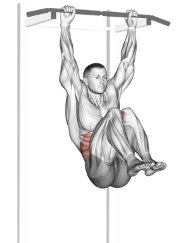
As soon as you feel the change of pace you need, quickly bring your knees up to your chest as if you were working your abs. Raising your knees causes your upper body to lean back, making the lift easier.
It is possible to do a strict muscle up without lifting your legs, but it would be more difficult and less beneficial overall. Bringing your knees to your chest engages more abdominal and lower body muscle groups.
Step Five: Pull your chin over the bar
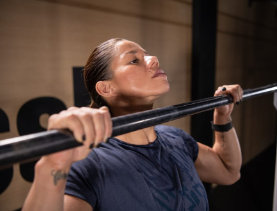
Bring your knees up to your chest and lift your chin up with your arms toward the bar. He tries to get as high as possible during this move. You want to push your body at least as high as a normal pull-up, or even a bit higher.
When you get as high as your arms can reach, hold on to the tension and let yourself fall again. Keep your arms bent over the bar and your elbows locked. If you swing correctly, your legs and back will move back. This position and momentum will allow you to get your chest over the bar.
Step Six: Pass your chest over the bar
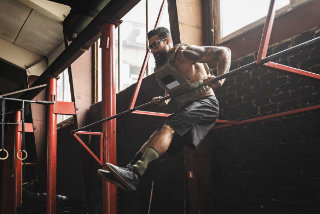
You want to go from the pull-up to the bottom by bringing your shoulders over your hands as quickly as possible. When you do this, your chest should rise above the bar. At this point, you can keep your knees bent or start kicking with your legs.
Both formats are acceptable. Kicking with your legs can increase the momentum you've already built and make the move easier to execute.
Step Seven: Press your hands down

Complete the movement by pressing the bar with both hands. When you do this, you should naturally propel your body up and past the bar. Continue until your arms are on top of the bar and fully extended. Work as slowly as necessary to avoid injury. Focus on getting your elbows over the bar. Then gradually straighten your arms as far as you can without tension or pain. Keep your core contracted.
You may also need to adjust your grip at the height of the muscle up. Change the false grip for the normal one. Wrapping your thumbs around the bar at this point will help keep you from slipping as you adjust the position of your arms.
Ring muscle up technique

First step: Get under the rings
Position yourself directly between and below the rings. You should be able to lift your hand up with your elbows slightly bent when you reach the rings.
Unlike the bar, you don't need to start with your body at an angle to the rings to build up your starting momentum. Since the rings are flexible rather than rigid, it should naturally be easier to lift your upper body even without the added rocking.
It should be noted, however, that doing the muscle up on rings is more difficult than on the bar. Although it is easier to gain speed, the rings are not stable. When these move, you need more control of your body.
Second step: Hold on to the rings with a false grip
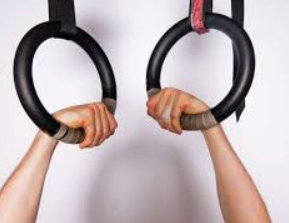
Raise your arms and grab both rings with a false grip, instead of using a normal grip. If you are not familiar with the false grip, you should practice it first. This type of grip is important because it takes your thumb and wrist out of the equation, and makes it easier to lift your body higher and transition between movements.
Hold the rings with a false grip by placing the palms of the hands on the rings and flexing the hands toward the elbows and little fingers.
Third step: Hang from the rings
Gradually straighten your arms and kick your legs out in front of you. You must be hanging from the rings and supporting your weight only in your hands.
Keep in mind that your arms should be above your head and shoulder-width apart.
With the false grip, you may not be able to fully straighten your arms. However, you should try to straighten your arms as much as possible to make the next step easier.
Step Four: Pull your body up
Pull your body up with your hands until your chin is level with or slightly above the bottom of the rings. As you raise your body, try to pull the rings in. Wear the rings close to each other and close to the chest and body. You may have to position your elbows out to balance the rings.
Lean back enough so that your face moves behind the rings, not between them. Your head should be behind the rings to create enough space and momentum to transition into a dip.
Step Five: Bring your upper body forward
As soon as you feel stable enough, lean your shoulders and chest forward. The shoulders should feel like they are each extending over the top of each ring. You should bring your shoulders completely over the rings when you do this. By doing this, you'll be able to place more weight on the rings, making it easier to transition into the full muscle-up .
In theory, you can place your shoulders directly on the rings using only the strength of your arms. However, you have to lean forward so that your weight is on your arms. Otherwise, you may end up slipping before completing the exercise.
As you pass your shoulders over the rings, you should start to rotate the rings outward. Your arms should be naturally shoulder-width apart, but don't let your arms extend any further. Turn the rings so that your fingers are facing out. By turning the rings, you can lift your body.
Sixth step: Help yourself with your legs to lift your body
As you raise your upper body, you should start to push your legs down simultaneously (keeping both legs fairly straight). However, you don't have to straighten your legs completely. It is best to keep your legs slightly bent at the hips so that your feet are in front of you. Keeping your feet in front of you can help you maintain balance and stability.
If you have trouble keeping your legs straight, you can lift your knees to rest in front of your lower abdomen.
Regardless of whether your legs remain straight or bent, they should be held slightly in front of you. This makes it easier to shift your body weight so that you can get behind and over the rings.
Seventh step: Press the rings to do the musleup
Use your hands to press the rings. Continue until your entire chest and upper arms are above the height of the rings. When you reach this point, you will have done the full muscle-up .
The arms should begin to straighten, but should remain slightly bent at the elbow. Keep your hands shoulder-width apart. Note that your chest will also straighten out a bit, but your shoulders and upper chest should still lean forward a bit. Try to keep your back straight. You don't want to allow your spine to arch. The curvature of the spine prevents the muscles from working properly. You must also contract the core. As you get into this position, your legs will naturally drop below the rest of your body.
Techniques and tips for the first muscle up
If you're stuck and still can't do your first muscle up , maybe the following tips will help you.
Warm up
Warm up first with cardio and moderate resistance exercises. You can run, jump, walk without moving or work on an elliptical for 15 minutes. Moderate resistance exercises, such as pulldowns or rope rows, can also help you warm up the muscle groups needed for this exercise.
Start with basic pull-ups
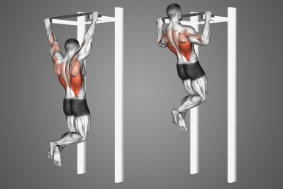
Basic pull-ups help you build muscle you need to control a muscle up. Basic pull-ups can be done in different ways, with different grips and hand positions.
- Start by hanging on the bar. The arms must be extended and the feet must be separated from the ground. You can cross your legs at the ankles and pull your legs up so that the bottom of your legs is parallel to the ground.
- To do traditional pull-ups , grasp the bar with an overhand grip. Hands should be wider than shoulders. Contract your abdomen and pull up until the bar is at your chin. Pause and then repeat.
- In a chin-up , you grab the bar with your fingers facing you (supinated grip). Then, raise your body until the bar reaches your chin.
- Wide-grip pull-ups engage your upper lats more, while chin-ups work your lower back, mid-back, and biceps. Both styles prepare you to do a perfect muscle up. You can add ballast (dumbbells, kettlebells, discs...). A heavier weight will better prepare you for your goal.
Practice the muscle up technique on the floor
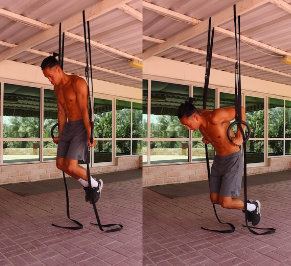
It's harder to muscle-up when the Olympic rings are hanging above you. If you want to learn how to muscle-up with rings, you should start with the rings closer to the ground.
- Lower the Olympic rings so that your feet touch the ground. He grabs the rings and fully extends his arms. Then he practices swinging and throwing his head and chest into the middle of the rings while keeping his elbows tight.
- By lowering the rings closer to the ground, you practically do the second part of the muscle up. This type of exercise makes it easier for you to reach the muscle-up position after lifting up.
- This technique allows you to work and build the muscles necessary for the muscle-up. It also trains the body to use proper movement and technique, which builds good muscle memory.
- This is also a good time to practice chest dips, which you must master to be successful. Grab the rings with the false grip and extend your arms. Lift your feet off the ground and do several chest dips.
Practice kicking pull-ups
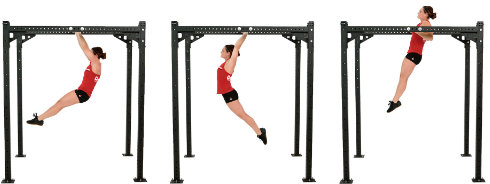
Kick pull-ups are a more advanced version that involves rocking the body back and forth. The swing motion allows you to gain momentum to rise above the bar.
- Begin practicing kick pull-ups by taking the time to complete each part of the movement correctly before doing them.
- When you swing forward, you want your head to be forward in front of the bar. Shoulders, hips, and legs should be bent behind the bar. As you rock back, you'll want your hips to lift and move forward while keeping your head behind the bar.
- When your hips have reached the maximum height, stand up and approach so that your chin is on the bar. Then, drop back into a downward swing. Keep your grip slightly relaxed. You don't have to squeeze the bar very hard. You want a light grip to have fluid movement.
Get used to the pull-up bar before using the Olympic rings
Doing the muscle up on the bar is easier than on the rings. Therefore, first get used to working with the bar.
- You also have to practice the pectoral bottoms on the bar. Exercises on the bar will help you build muscle and technique. Because the bar is more stable than the rings, it gives you a better learning platform.
- Once you feel confident with the bar, try using the Olympic rings at a low height. When you are trusting with the rings at low height, you can raise them. Then, practice the muscle-up with the rings raised.
Requirements to do your first muscle up
In this part of the article, we will provide you with a 5-step muscle-up progression guide . We will also talk about the requirements of the first muscle up for beginners . We'll look specifically at how you can build the strength, skill, and confidence needed to pull off the move.
The muscle up is a complex bodyweight exercise that requires strength, joint stability, and body control. To attempt to learn this move safely, you should already have some stability and coordination. If you don't have this, you could injure yourself. Overuse and stress on joints and connective tissue could cause injury. You could also have shoulder, elbow, and wrist problems.
Before attempting your first muscle up , we recommend that you complete the following prerequisites with proper form and control.
• 10-15 pull-ups (normal and chest to bar)
• 10-15 dips in Olympic rings
• Hold the body with arms extended on the rings
The requirements are general recommendations. If you're not sure you're ready, try several beginner muscle-up tips or find a qualified trainer.
Guide with 5 tips to achieve your first muscle-up if you are a beginner
1. Increase your strength in exercises with your body weight
As we mentioned before, do bodyweight exercises like pull-ups, chin-ups, push-ups, push-ups, sit-ups, planks, and more movements needed to build muscle up. Once you've built strength with your bodyweight, you can add tempos, grips, and other complex variations to improve body control, muscular endurance, and resistance to injury.
Start with the following : Do 3-4 sets of strict pull-ups and ring dips.
Add Difficulty : As you progress, do pull-ups with rocking, tempos, and other variations.
We recommend the following list of bodyweight exercises as a complement to the muscle-up:
• Swinging and tantrum pull-ups
• Pulled up bringing the chest to the bar
• Bottoms for pectoral in the rings
• Hollow Rock
• Pulled up with legs in "L"
• Rowing for back in the olympic rings
2. Hold the body in the rings

Assuming you want to muscle-up on the rings (if you're using a bar, do it with the bar), you'll need to adapt and build isometric strength and control in challenging positions. Hold for a certain amount of time at the bottom of a dip, at the top, and throughout the entire upward trajectory of the muscle-up. You can increase coordination, muscle function and reduce joint instability.
Start with the following : Start by holding for 20-30 seconds at the bottom and top of a ring dip. Focus on using your muscles and not your joints.
Add Difficulty : Hold on for longer and longer, pausing your reps as you go.
3. Practice assisted muscle-up transitions
The rotation or transition phase is often the most difficult part of the movement, requiring strength, power, stability, and confidence. Many people lose control of their body at this point because they often lose their stiffness when trying to do an aggressive swinging motion.
Understanding how to properly transition into a ring muscle-up (or a barbell) is key to success, but even more important is maintaining proper shoulder position to minimize injury. Low rings (which allow the lifter to sit or stand on the floor), the rubber muscle up , or even the help of a partner can all serve to enhance this important step in the process of learning the exercise.
Start with the following : Start from a sitting or standing position on the floor.
Added Difficulty : Remove contact points from the ground and increase the height of the rings.
4. Understand swinging and how much is enough
Once you've developed strength, technically grasped the twist, and understand the movement as a whole, you should learn to swing and kick rows. To master the muscle up step by step , you have to learn to control swings on the rings while suspended in the air. This requires a lot of core stability, body control, and timing.
Start with the following : Start by swinging on the rings and kick bigger and bigger as you gain confidence and control.
Add Difficulty : When you're in control and confident, do a rowing motion at the top of the swing so that your chest and hips point up (lean back) at the top of the movement. Thanks to this, it will be easier for you to move to the bottom position.
5. Connect everything
Once you've mastered the steps above , it's time to combine the individual components for a complete muscle up . It is recommended to do so under the guidance of a trained, experienced and qualified trainer to reduce the risk of injury and speed up the learning process.
Variations and progressions of the muscle up
Below are three variations of the barbell muscle up that improve strength, muscular endurance, skills, and stability.
1. Strict muscle up bar
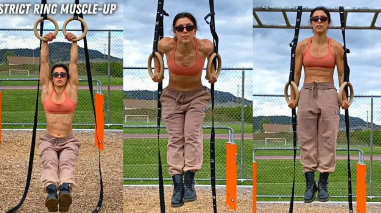
The strict muscle up is done without throwing tantrums. Of course, this requires a tremendous amount of body strength in the back, biceps, shoulders, pectorals, and triceps.
2. Complex muscle-up
You can improve your training with this technique. For example, every time you do a muscle-up, you can do 5 dips in a row on the bar ( pectoral push up on the bar ). This will help you improve certain parts of the muscle-up.
3. Weighted Muscle-ups
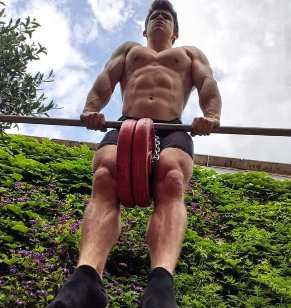
Muscle-ups with added weight, while only recommended for the most advanced athletes, can be done to increase the difficulty and ultimately make moving with bodyweight easier. The amount of external load should be kept light (think about 5-15 kilos).
Training with your own body weight can improve your fitness, coordination, and muscle control. These advantages can be directly applied to gymnastic movements. We recommend you always do exercises with your own weight!
Tips for the muscle up
To do muscle ups , you need both pulling and pushing strength. If you already do at least 10 pull-ups and 10 push-up dips, you can start learning! Are you still having problems? So, you should keep reading our next muscle up tips .
1. Learn to swing
The first important tip is that you need to balance well. Because? Because the objective is to go around the bar and reach the top. With swinging, you can create momentum and move diagonally. In a normal pull-up, you pull your body up without swaying. This makes it impossible to go over the bar because you can't get your elbows around the bar. Do the following:
- Grab the bar.
- Swing; mainly your chest.
- Make sure your arms are really straight.
- Swinging allows you to create momentum to pass the bar.
2. Imagine a trampoline
The next important tip that you should implement is to know at what point you need to get up. So, you will create a swing, as mentioned above. When you are as far forward as possible during the swing, push yourself diagonally. To put it another way, the moment your swing is going backwards and not forwards, you need to push diagonally. To make this technique a bit easier for you, you can imagine that there is a springboard in front of you . As you get closer to the springboard, you should imagine jumping onto it to build momentum and straighten up.
3. Raise your knees
Another very helpful tip is to use your knees for more momentum to get past the bar. Pushing off with your knees makes it easier. Your first few muscle-ups don't have to be strict or perfect. Help yourself with your knees!
4. Pull your arms straight down
This advice is important is about. Typically, we see many people doing a pull-up without going over the bar. This is because you should not lift your chest towards the bar. The goal is to bring your hips to the bar. This can be done by pulling down with your arms straight. This will make everything much easier.
5. Pole Vault
The last piece of advice is about where you should be standing if you are starting out with muscle-ups. Don't start under the bar, start behind the bar. Then, jump on the bar and swing forward. When you take the first step in front of the bar (during the swing), you should immediately get up. Why can't you just hang on the bar and start swinging until you feel the time is right for you? Because it takes a lot more energy than you can use to propel yourself.
If you implement these 5 tips , you will surely learn to make the movement quickly.
How often can you train muscle ups?
We recommend practicing this exercise at least 2 times a week or, if possible, 3 times a week. Always make sure you have at least 1 full day of rest between muscle-up exercises.
Extra exercises
In addition to practicing the 5 technique tips above, you should do additional exercises to build strength. For example, you can do the following exercises:
Russian dips . Gain strength to help you with the movement of dips.
Dips on the bar. Gain strength and practice the technique that will help you with the movement of the bottoms.
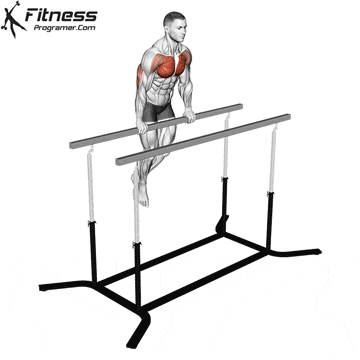
Explosive pull-ups . Focus on doing the pull-ups as quickly as possible.
Negative muscle up or inverted muscle up . You start at the top of the bar with your arms straight and focus on making a slow descent. Maybe you can try the muscle up with a box to help you get started.
Weighted pull-ups . You want to gradually overload this exercise. Do another repetition or increase the weight you can carry.
Jumping muscle ups . Practice muscle ups on a lower bar and how to use power to get up.
Muscle up with a rubber or resistance band . You can also use a resistance band while doing the exercise. Really, the rubber will help you get up. Start with a thick rubber and work your way up to thinner rubbers as you progress.
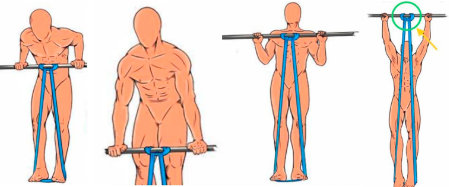
Muscle up muscles involved
What is the muscle up for ? A muscle-up involves the entire body and relies heavily on momentum to perform the movement. The effect of muscle work is limited because there is no time for movement due to tension and momentum. If the lifter wants to increase the hypertrophic effect of the upper muscles, less explosive variations such as strict muscle-ups are recommended.
• Back (Latissimus dorsi)
• Biceps and forearms
• Chest
• Triceps
• Core muscles (Rectus abdominis, abdominal muscles)
• Buttocks and posterior chain muscles
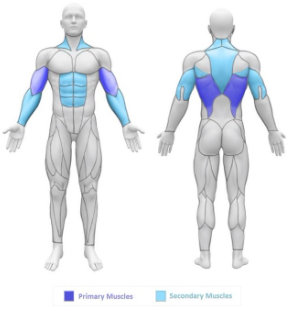
Benefits of the calisthenics muscle up
Adding this exercise to your routine has a number of benefits . Let's see them.
- This exercise can increase upper body strength. Activates the triceps, dorsal, deltoid and pectoral muscles.
- Movement can improve grip strength. This exercise activates your forearm muscles and strengthens your grip for when you're doing other compound exercises like pull-ups, chin-ups, and deadlifts.
- It can also improve your mobility. The muscle-up movement pattern involves a transition phase between a pull-up and a dip, allowing the elbows and shoulders to move through their full range of motion.
Progressions to gain strength in the muscle-up
Try some of the following exercises to build strength:
• Hold Body Position : Practice this beginner bodyweight exercise by keeping your body hanging from the bar as you tighten your core and your hips are leaning forward.
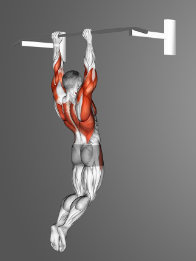
• Rubber Band Muscle Up : If you're doing the exercise for the first time, try putting a rubber band around a pull-up bar. Lean on the other end of the rubber band.
• Do dips on a straight bar : If you have difficulty transitioning from the muscle up , do this variation. Hold your body in a bent over position at the top of the bar with your arms straight. Slowly lower down to engage your triceps, and come back up to the top position with each rep.
• Negative muscle-up : This is a slightly easier alternative to traditional muscle-ups. Practice negative muscle-ups by focusing on the eccentric phase of the exercise or the lowering part of the movement. Find a way to start at the top of the bar and focus on gently lowering your body throughout the movement.
• Muscle-up on gymnastic rings : If you have training rings available, try this variation.
• Kicking Muscle-up : Try this advanced variation using momentum to lift your torso to the top of the bar.
How to train and do this exercise safely
If you have an existing or pre-existing medical condition, talk to your doctor before starting an exercise program. Proper exercise technique is essential to ensure the safety and effectiveness of your training program, but each exercise may need to be modified to achieve optimal results based on your individual needs. Always choose a weight that allows you complete control of your body throughout the movement. Pay special attention to your body when doing any exercise and stop immediately if you feel any pain or discomfort.
If you want to see steady progress and increase body strength, incorporate proper warm-up, rest, and nutrition into your exercise program. Ultimately, your results will be based on your ability to recover properly after exercise. You must rest 24-48 hours before exercising the same muscle groups to ensure adequate recovery.
For which people is the muscle up recommended?
Let's look at some groups of athletes who can benefit from incorporating muscle up into their training programs.
• Strength, power and sport athletes . The muscle-up is a skill-based movement often used in gymnastics and functional or competitive fitness. The muscle up is also used in Crossfit . However, professional strength and power athletes often find little benefit from performing this highly specific skill and movement exercise.
Strength and power athletes who want to do this exercise should determine if the risk of injury, the time spent training the movement, and the overall increase in strength and power (minimal or none) are worth the investment.
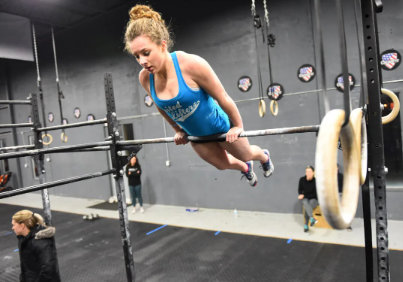
• CrossFit competitors and fitness athletes . The muscle up is a sport-specific movement of CrossFit and should be able to be performed by competitive athletes. Therefore, learning this movement and its variations can help improve overall performance during WODs and competitions.
Other frequently asked questions
How do you do the olympic muscle up?
In this version of the exercise, you help yourself with the impulse of the legs to facilitate the ascent. The truth is that this technique saves a lot of energy and allows you to do more repetitions.
What is the impossible muscle up?
It is a muscle up with an almost impossible technique to perform, which very few people have achieved. It requires extraordinary strength and total control of your body weight.
To do the impossible muscle up , you have to go up straight and without leaning your body forward. Also, the chest must not touch the bar at any time. This is very difficult! Vadym Oleynik is one of the few people who has achieved the MU impossible (see video).
What is a muscle up slow?
It is another variant, although less difficult than the impossible muscle up. It consists of doing all parts of the movement slowly . This is quite complicated and requires a good mastery of the muscle-up with normal speed.
What is the muscle up 360?
This exercise is very, very difficult. When you muscle-up and you're at the top, you need to release your hands from the bar, turn your body around, and grab the bar again. It is only for very experienced calisthenics experts.
How do you do a supine muscle up?
For this, you have to grab the bar with your hands in supination. The fingers of your hands should be facing you. It is a complicated movement, since your main point of support will be the fingers.
Can you muscle up one hand?
Some people have made it. Very few have accomplished this feat. Only calisthenics with great skill have achieved it. Some people have even managed to do a weighted one-handed muscle-up. Incredible!
Can I do the muscle up at home?
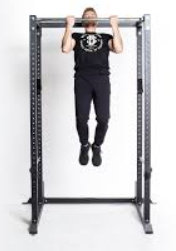
You can do this exercise at home, but you need a pull-up bar hung high and where there is enough space (for example, there shouldn't be a wall you could bump into). Another option is to purchase a heavy-duty power rack with a built-in pull-up bar on top. It will help you to do the muscle up .





![LAS MEJORES MÁQUINAS DE MUSCULACIÓN PARA PRINCIPIANTES [GUÍA 2025]](/modules//smartblog/images/no-home-small.jpg)
![HOW TO BUILD A HOME GYM ON A BUDGET [2024 GUIDE]](/modules//smartblog/images/296-home-small.jpg)


